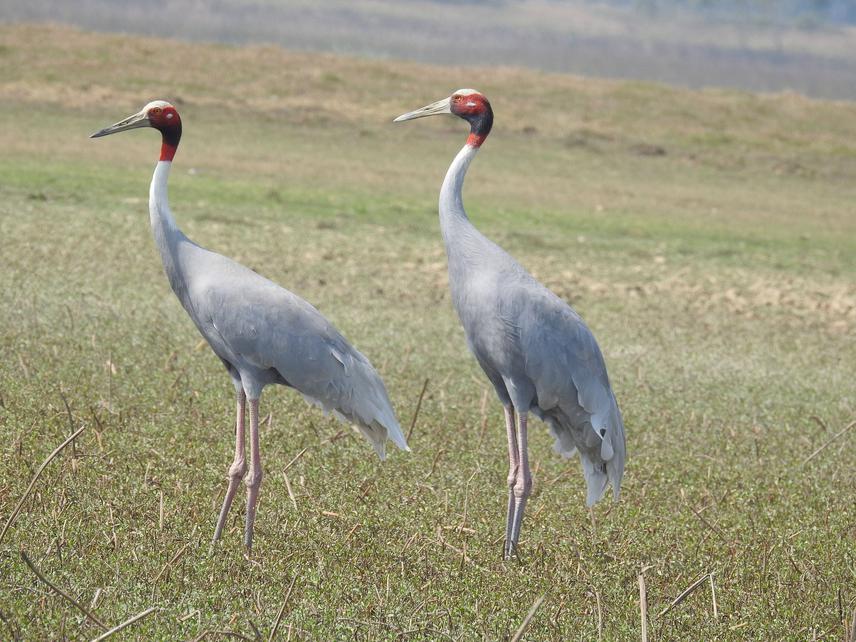Seejan Gyawali
Other projects
24 Sep 2013
Participatory Inventory and Sustainable Conservation of Sarus Crane (Grus antigone) in Farmlands of Lumbini, the Important Bird Area of Nepal
Farmland of Lumbini and Jagdishpur Reservoir, are considered stronghold for Sarus Crane population in Nepal whereas other areas have been overlooked for this species. A new breeding population has been identified in the mid-west Terai of Nepal but due to lack of knowledge about population status, spatial and temporal fluctuations, priority locations, local people’s attitudes and their activity in Sarus Crane habitat, it is difficult to plan further conservation measures. Field research will be conducted by liaising with locals while enhancing their capacity and raising their knowledge to ensure the sustainable survival of Sarus Crane in project site.

The Sarus Crane (Grus antigone antigone) is a globally threatened bird identified as Vulnerable in the IUCN Red List. Historically, it was distributed throughout the central to far-western Terai of Nepal. It has been lost from most of the areas and currently survives in small fragmented populations, due mostly to rapid expansion of human settlements that lead to loss of habitat such as farmland, grassland and wetland. Two Important Bird Areas (IBAs), Farmland of Lumbini and Jagdishpur Reservoir, are considered the stronghold for the Nepalese Sarus Crane population and are well studied and conservation initiatives have been established. Nevertheless, there has been a lack of research on the Sarus Crane elsewhere in Nepal. A new breeding population of Sarus Crane with 25 individuals was identified in the Banke district by the project leader (Gyawali 2015) and the species has been observed in the Bardia, Kailali and Kanchanpur districts. Banke has consequently been identified as new IBA for Nepal and further investigation of the area is recommended. Preliminary knowledge suggests that this population is facing threats such as egg stealing by farmers and other disturbance during breeding season. A further study to generate recommendations and immediate actions to reduce the threats is essential.
This project will monitor the population status, distribution pattern, and habitat use breeding of Sarus Crane -The globally threatened, Nationally Protected, Flagship Species in Farmlands of western Nepal involving well trained local neighbouring community in all potential niches of project area. Project will conduct awareness and promotional activities in collaboration with local community based organizations. Project will also develop useful relevant materials with conservation messages and will be distributed in schools and communities for the long-term flow of conservation messages in mass which will contribute in long lasting conservation of not only this flagship species but also the threatened birds from the project area.